
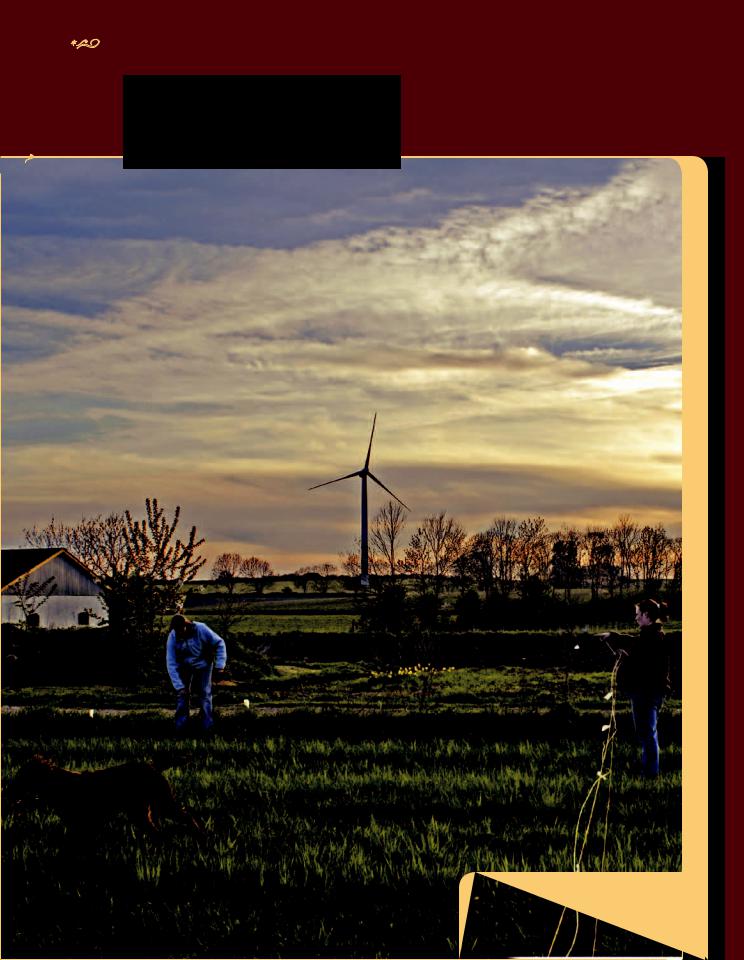
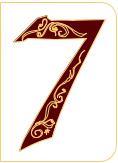 Samso
Samso
A wind turbine rotates on the Danish island of Samso. It provides electricity for the island’s population.
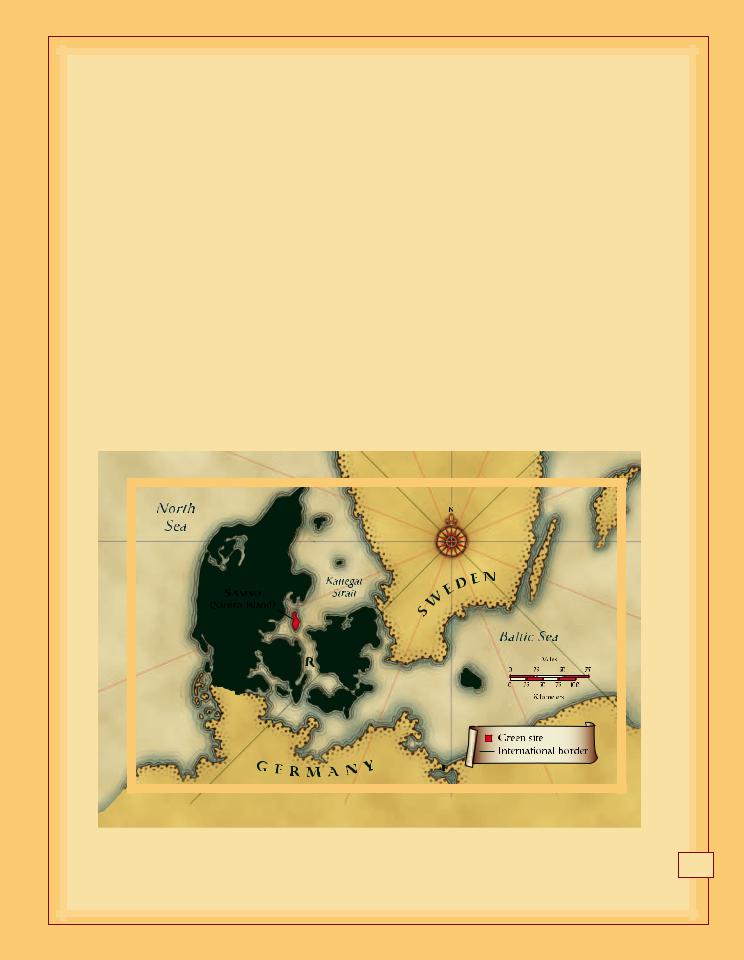
Samso, an island in Denmark, is a
carbon-neutral settlement. To be carbon neutral, a place
must produce more clean energy than unclean energy. The
clean energy cancels out the unclean energy, reducing the
carbon footprint to zero.
For the people of Samso, becoming carbon neutral took some effort. But it was far easier than anyone on the island had imagined. Using wind turbines, solar panels, vegetable oil, and other tools, islanders took only five years to make Samso a green island.
65
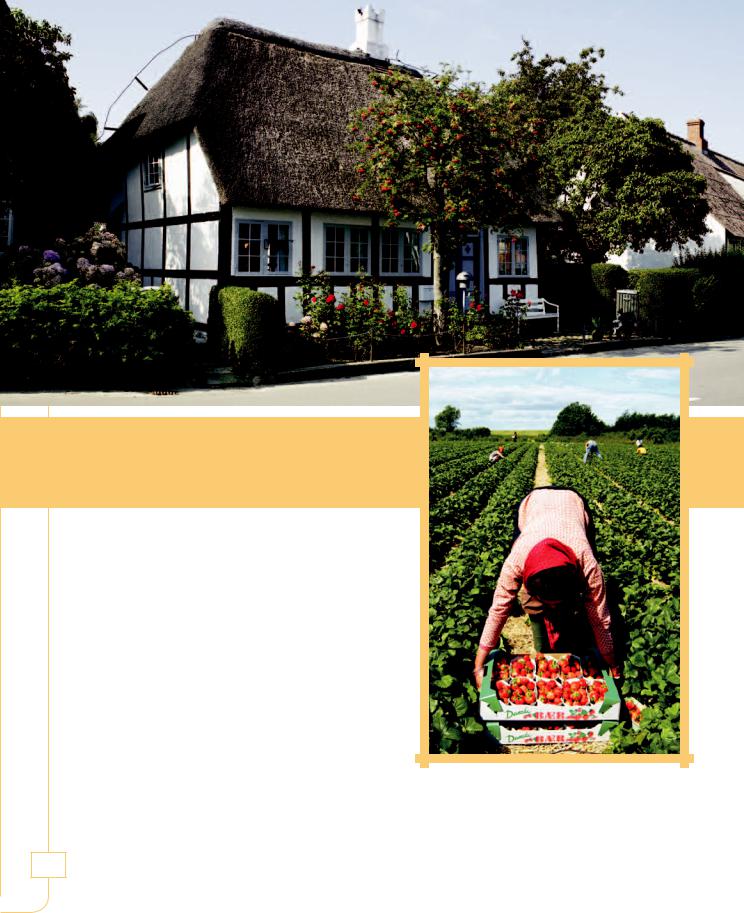
Seven Wonders of Green Building Technology
Above: A quaint house stands on a street on Samso. Right: Workers pick strawberries in the afternoon sun. Samsingers (people of Samso) showed that an entire community could go green.
About Samso
Denmark is a nation in northwestern Europe. It consists of a mainland and many small islands, including Samso. Samso sits in the Kattegat Strait, which is part of the North Sea. West of the island is Denmark’s mainland. East of the island lies the country of Sweden.
Samso is about 40 square miles (104 sq. km) in area. Its summers and winters are fairly mild. The average summer temperature is 68°F (20°C). The average winter temperature is about 32°F (0°C). The island has a population
of just over four thousand year-round residents, known as Samsingers. Samsingers are famous for their strawberry and potato crops. But they are even more famous for creating the largest carbon-neutral settlement on Earth.
66
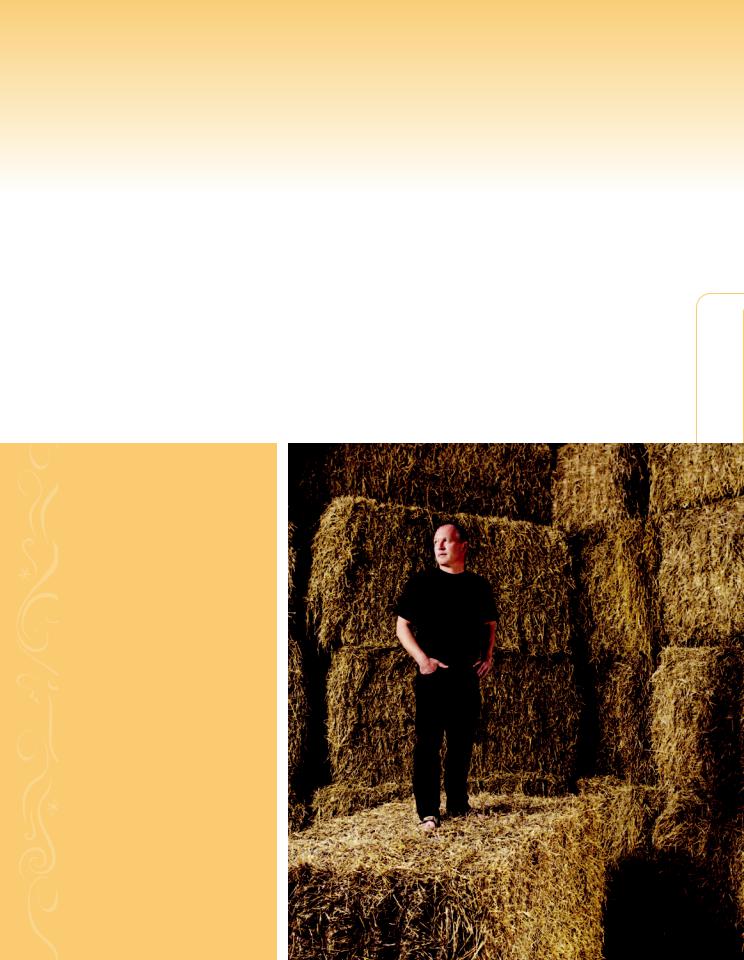
“[Soren] Hermansen showed up at every community or club meeting to give his pitch for going green.”
—Bryan Walsh, “Heroes of the Environment 2008,” 2008
Community Involvement
In the late 1990s, the Danish government held a contest to see if an island could produce all its energy from local resources. The government wanted to know how islanders would heat their homes and businesses without coal and oil. How would they get electricity? The winners of the contest would have ten years to achieve their goals.
Soren Hermansen was an environmental studies teacher at a high school on Samso. He convinced Samsingers to enter the contest, and their plan won. The Danish government gave islanders some money to implement their plan. The rest was up to the community.
Soren Hermansen led the project to make Samso a carbon-neutral island.
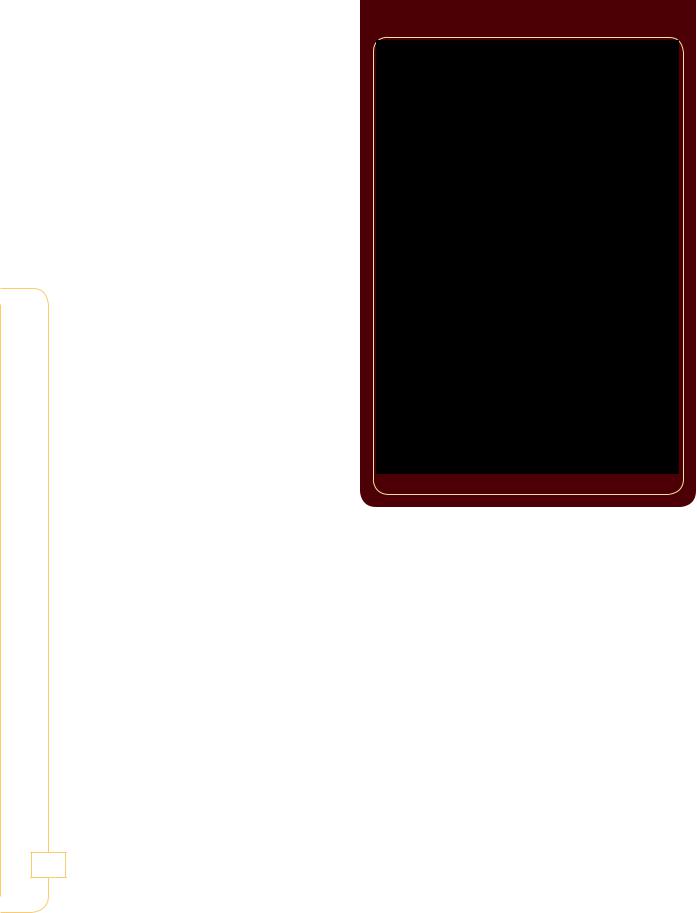
Seven Wonders of Green Building Technology
68
After Samso won the contest, Hermansen met with community members. For the project to succeed, the people needed to work together. At meetings, islanders talked about their most valuable energy sources. These included sunshine, wind, straw, and rapeseed oil. Samsingers thought about how they could put these resources to work.
Wind as Energy
People have been harnessing the wind’s power for centuries. Farmers have long built windmills to turn pumps and other machines. Samso has strong winds along its coast. Samsingers knew they could use the power of wind to make energy.
Some of the Samsingers pooled their money to buy eleven wind turbines. Wind turbines are tall towers, 80 to 200 feet (24 to 61 m) high. They use the wind to generate electricity. After placing the turbines in three different spots on the island, islanders built a central plant to store the electricity.
Buying wind turbines turned out to be a good idea. The turbines generate enough electricity for the entire island. Islanders pay for the electricity they use, but it is cheaper than electricity from coal-burning plants. Some of the money Samsingers pay for electricity goes to repay the people who bought the turbines. Best of all, the turbines produce clean energy.
The wind turbines worked so well that islanders bought ten more of them. They placed the new turbines offshore—in the sea off the island’s southern coast. With the original eleven turbines and the ten new ones, Samso generates more electricity than it needs. Islanders sell the extra electricity to people on the Danish mainland.
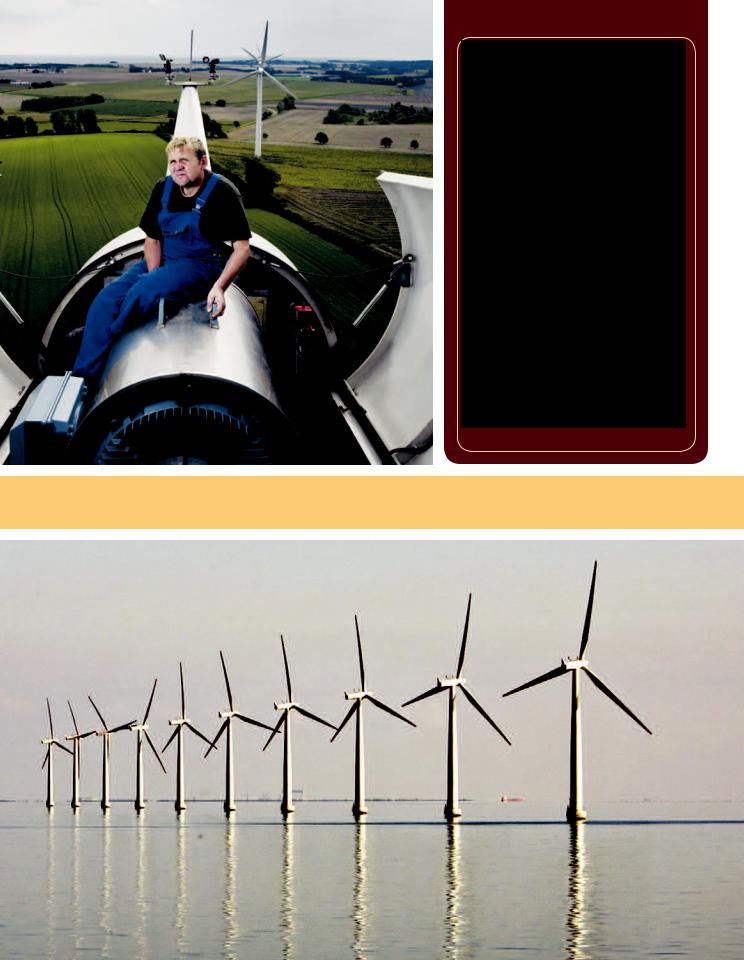
Are Wind
Turbines
Pollution
Free?
The factories that built Samso’s wind turbines most likely run on fossil fuels. They release carbon dioxide into the atmosphere. But when making energy, wind turbines themselves do not produce any carbon dioxide or other pollutants.
Above: A farmer sits high above his fields while showing off one of his wind turbines. Below: A row of ten wind turbines lines the shores of Samso. The turbines turn wind energy into electricity.
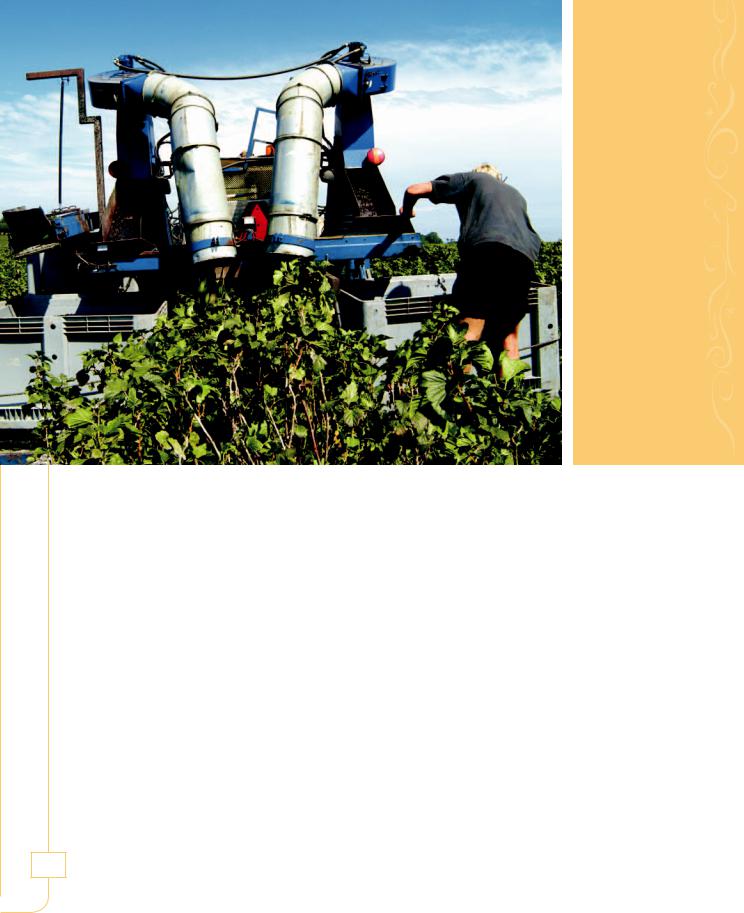
A farmer harvests black currents from his field. The fuel that runs his harvester comes from rapeseed. He doesn’t need to rely on fossil fuels to harvest his crops.
Seven Wonders of Green Building Technology
Straw, Sun, and Sheep
Samsingers didn’t stop with the wind. Instead of burning oil or gas to power their home furnaces, islanders use straw. Straw consists of dried stalks of grain, such as wheat and rye. Straw and other plants used as fuel are called biofuel.
Farmers on the island grow the wheat and other grain that makes the straw. Samsingers then burn the straw in three heating plants. Underground pipes carry the heat to homes and other buildings.
Burning straw releases carbon dioxide into the air. But when farmers plant a new field of crops to get more straw, the new plants absorb the extra carbon dioxide. By producing carbon but then taking it away, Samsingers are able to reduce their carbon footprint.
Instead of fueling cars and tractors with gas, Samsingers use rapeseed oil. This vegetable oil comes from rapeseed, a crop that grows well on the island. Finally, Samsingers have placed solar panels on rooftops and in fields to collect the sun’s energy. Sheep graze on the fields’ grasses. They keep the grass from growing tall and covering the solar panels. About 70 percent of the island’s heat comes from solar energy.
70
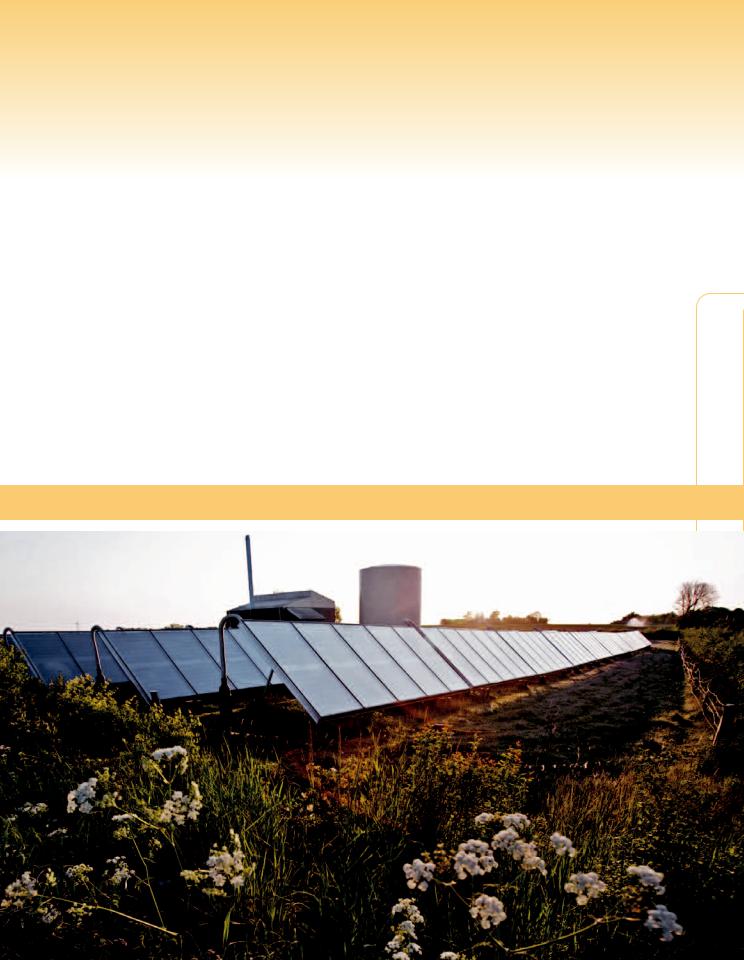
“I’ve just been to the [United States] . . . they could make a lot of energy with all that sunshine.”
—Erik Koch Andersen, Samso resident, 2007
An Environmental Model
By 2003 Samso was carbon neutral. But islanders still create some pollution. To reach the mainland from Samso, people must take ferries. Ferries run on fossil fuels. In addition, Samsingers’ household items, clothes, wind turbines, and solar panels come from factories that create pollution. But Samsingers are still carbon neutral because they produce more clean energy than they use. The energy they make balances out the pollution.
By working together, Samsingers have made a positive difference in their environment. People on the island benefit by earning money from the electricity they generate. And they accomplished their clean-energy goals in
half the time allowed. Samso has become an environmental model for the rest of the world.
Rows of solar panels in a field on Samso capture the sun’s energy.
